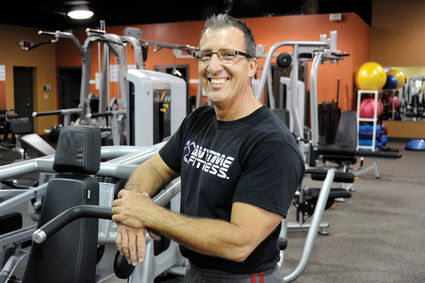Eat well for better health and fitness
Last updated 1/14/2011 at Noon
Please understand everything I provide are suggestions for you to help aid in your ultimate success in obtaining your goal. Your ultimate success depends upon you and staying on track. This is provided as an additional item to support you. If I could be there in your home to provide additional support and motivation I would, but unfortunately it’s impossible.
This diet suggestion helps to explain some of the foods for certain areas and can be vitality important for success in addition to your diet. This is provided for you to guide in foods allowing for more variety and potential success. All of the foods entered here are so low in fat, or non-existent in fat, that it isn’t necessary to use fat from them in a count.
Metabolism: The process of metabolism includes all of the chemical changes that nutrients undergo from the time they are absorbed until they become a part a part of the body or are excreted from the body. Metabolized nutrients can be used as energy or as building material for living tissue. Proper diet and exercise speed the process of metabolism, resulting in improved tone and quality of muscle tissue as well as the depletion of fat stores. Additionally increased metabolic rate will continue to burn calories from increased muscle stores and decreased fat.
Protein: One of the most important substances for the maintenance of good health and vitality. Protein is the major source of building material for everything from blood and muscle and skin, hair, nails, and internal organs. Not only does protein control the body’s rate of metabolism and regulate water and balance, its very important in preserving muscle tone and muscle mass in dieting individuals.
1 Gram of protein equals 4 calories
Carbohydrates Carbohydrates (Sugar and starches) are the main source of energy for all muscle and function. Carbohydrates or “carbs” are converted by the body to simple sugar called Glucose. Some of this glucose is used as fuel for the body. The rest is either converted to Glycogen and stored in the muscles and liver, or converted to fat and stored throughout the body for later use. It is by short-term carb depletion and exercise that the glycogen stores can be depleted. In turn stores of body fat are reconverted and used as energy, resulting in weight loss. Substantial carb depletion for over 1 week should never be done.
1 gram of Carbohydrate equals 4 calories.
Fats: They are also known as lipids. They are the most densely caloric source of energy in the diet. Fats are difficult to digest and are more readily stored throughout the body, rather then immediately used as energy.
1 gram of fat equals 9 calories
The foods suggested herein are typically low in fat. They are not inclusive or exclusive but an additional help for you. This eliminates the need for counting fat intakes and prevents them in being a primary factor in individual diet setup.
DO NOT DEEP FAT FRY ANY FOODS OR COOK IN GREASE.
PROTIEN
EGG WHITES 3.5 grams of protein. Separate boiled egg after cooking or separate before making an egg white omelet.
CHICKEN/TURKEY BREAST (Boneless. Skinned, fat trimmed) 6 grams protein per ounce.
TUNA (in water) 1 oz 7 grams protein
FRESH FISH (cold water white fish, Tilapia, fluke, flounder sole, cod, haddock are on top of the list) 1-OUNCE EQUALS 6 GRAMS PROTIEN
Avoid salmon, mackerel, swordfish and orange roughy, as they are higher in fat.
In carbohydrates a good rule of thumb is if its white it’s not right, except for Cauliflower, if it’s brown or green its good.
CARBOHYDRATES (COMPLEX) There broken down more slowly and remain a better source of energy for a sustained time.
OATMEAL 1/3 cup uncooked equals approximately 20 grams carbs
POTATO Baking type. 1 ounce approximately 5 grams carbs
SWEET POTATO/YAMS 1 ounce approximately 6 grams of carbs.
RICE Brown ½ cup approximately 22 grams of carbs
CARBOHYDRATES (FIBROUS) Help your system internally. They should be boiled, steamed, or microwaved in water. They should be cooked firm (Not overcooked) to be sure their nutritional values remain intact.
BROCCOLI 1 cup equals 6 grams of Carbs
CAULIFLOWER 1 cup cooked equals approx 6 grams of carbs
GREEN BEANS 1 cup cooked approx 10 grams of carbs
ZUCCHINI 1 cup cooked equals approx 7 grams of carbs
TOMATO 1 cup cooked equals approx 10 grams of carbs
BELL PEPPER 1 cup equals approx 6 grams of carbs
ASPARAGUS 1 cup or 10 spears cooked equals approx 10 grams of carbs
LETTUCE 1 6’ head equals approx 11 grams of carbs 1 cup chopped equals approx 1 gram of carbs
SPINACH 1 cup raw equals approx 2 grams carbs
ONIONS 1 cup raw equals approx 6 grams of carbs I cup boiled chopped equals approx 7 grams
Making home pre-packaged meals are a great tool for success. Measure cook and, or prepare meals and snacks ahead of time This will keep guesswork out of the equation and keep you on schedule.
Greg Burkett “Greg The Trainer” is a Personal Fitness Advisor in Bridge City. For additional information you may call Greg 409-550-0777 or e-mail at [email protected].















Reader Comments(0)